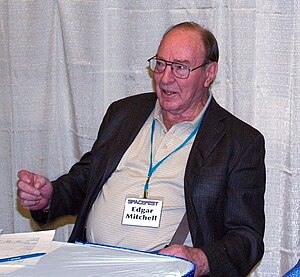 Image via Wikipedia Aron Ralston
Image via Wikipedia Aron Ralston
MSN - NZ Men Lifestyles.
Dream jobs for men. Read on:
The human body — and the mind — will go to extraordinary lengths to keep itself alive. History is peppered with stories of men who, despite finding themselves in desperate situations and facing seemingly insurmountable odds, took themselves to the extremes of endurance and lived to tell the tale.
From self-surgery and amputations with a blunt knife to losing your way in the
Amazon jungle and being left for dead after a grizzly bear attack, read on for some of the greatest real life stories of human survival.
Aron Ralston
How far would you go to cling on to life? Would you, for example, be willing to cut off your own arm with a cheap multi-tool? That's exactly what Ralston did after his right forearm was crushed by a boulder and pinned to a rockface while canyoneering in Utah in 2003.
Ralston had not told anyone of his location and therefore knew he would not be rescued. After five days of trying to free his arm and gradually running out of water, Ralston used the blunt knife to amputate his arm below the elbow (but only after breaking the bone himself). After making his way out of the canyon, he was found and airlifted to hospital. Ralston's ordeal is documented in Danny Boyle's recent film, 127 Hours, if you can stomach it.
Joe Simpson
Simpson and his climbing partner, Simon Yates, had done the hard part: ascending the unclimbed west face of Siula Grande, a 6,344-metre monster in the
Peruvian Andes in 1985. Disaster struck on the descent when Simpson slipped and broke his tibia, which was thrust upwards into his knee joint.
Yates began lowering Simpson on a rope, but when the latter fell over a cliff and was left dangling in mid-air, Yates had no choice but to cut him loose. Simpson landed in a deep crevasse, from where he somehow managed to abseil and crawl his way back onto the mountainside.
Without food or water and in excruciating pain, he then spent three days dragging himself across five miles of rocky terrain and finally crawled into base camp just hours before Yates was set to leave.
Nando Parrado and Roberto Canessa
When
Uruguayan Air Force flight 571 came down in the Andes in 1972, it was a miracle that any passenger survived the crash, never mind the events that followed.
Of the 45 people on board, 12 were killed in the crash or in the immediate aftermath, and another five died the following morning from their injuries. One week later, another passenger died, followed by eight in an avalanche. The remaining group of 19, facing severe cold and running out of food, knew they would not last long and had to resort to cannibalising the dead to survive.
Parrado and Canessa set off on a mammoth trek across mountains as high as 16,000ft, sleeping in a makeshift sleeping bag and walking for days until finally finding help. The 19 survivors had survived for two and a half months on the mountain before finally being airlifted to safety.
John McCain
Senator McCain's greatest triumph was not winning the 2008 Republican nomination to run for president, it was surviving five and a half years in
Hoa Lo Prison — the so-called 'Hanoi Hilton' — after being shot down over Vietnam in 1967.
With both arms and a leg broken, McCain was bayoneted and then beaten by the North Vietnamese before being imprisoned. He spent two years in solitary confinement before he was offered early release (his father was Commander of US forces in the region). McCain refused to go, stating he should not be released while others captured before him remained in captivity.
Before his eventual release in 1973, McCain was routinely beaten and tortured, often several times a day, and at one point tried to take his own life. The injuries he suffered during his time in captivity means he is now unable to raise his arms above his head.
Leonid Rogozov
Having your appendix removed is a relatively simple surgical procedure. But not when you are stationed at a remote Antarctic station, 1,000 miles from help and you're the only doctor. This is exactly what happened to Rogozov when he was part of the sixth Soviet Antarctic expedition in 1960.
After showing classic symptoms of appendicitis, Rogozov knew his options were limited. With the help of a driver and meteorologist who held mirrors so he could view his own insides, the Russian performed the two-hour operation on himself, using a local anaesthetic and stopping only to allow attacks of nausea to pass. Two weeks later, he had returned to full duties at the station.
Yossi Ghinsberg
The Amazon jungle in South America covers 2,123,562 square miles — not the sort of place you want to wander off the beaten path while ill-equipped for the harsh surroundings. This is exactly what happened to Ghinsberg, an Israeli who was separated from his travelling companions in an uncharted part of the Bolivian Amazon in 1981.
Ghinsberg and three others set off into the jungle in search of a remote Indian village. After one of the group developed trench foot, the foursome split up into pairs, with Ghinsberg and an American named Kevin Gales launching a raft to float downriver. When the raft hit a rock, Gale was rescued by locals but Ghinsberg was forced to spend an incredible three weeks wandering the jungle before he was found. No trace of the other two men was ever found.
Mauro Prosperi
At 156 miles, the Marathon des Sables in the Moroccan desert is considered one of the toughest foot races in the world, but as an experienced pentathlete, Mauro Prosperi would have been confident of finishing the six-day event when he took part in 1994.
Prosperi was in seventh place part-way through the race when a violent sandstorm kicked up and obscured the course. Desperate for shelter, Prosperi ran off in the wrong direction, and was soon lost in 100 degree heat and with only a few gulps of water and no food. After three days, Prosperi was forced to kill two bats and drink their blood. Fearful of a prolonged death, he tried to slit his wrists but severe dehydration had thickened his blood, which quickly clotted. After nine days alone in the desert he was found and rescued by nomads — almost 200 miles off course.
Alexander Selkirk
A real-life castaway (and the probable inspiration for Robinson Crusoe), Scottish sailor Alexander Selkirk spent four years on an uninhabited island off the coast of Chile. In 1704, after a dispute with the leader of a crew on the ship on which he was sailing, Selkirk was left on the island of Juan Fernandez, with only a rifle, knife, tools, clothing and a Bible. It would be four years and four months before he would see another human being.
He proved to be remarkably resourceful, surviving by eating shellfish, wild goats and vegetables and fashioning clothing from goatskin. When finally rescued in 1709, newspaper tales of his ordeal made him a minor celebrity. He also learned that the ship he voluntarily abandoned had floundered, with most of the crew losing their lives.
http://lifestyle.msn.co.nz/nzmenslifestyle/intheknow/8210726/extraordinary-tales-of-human-survival/
 Image via WikipediaFilm Salem Witch Hunt
Image via WikipediaFilm Salem Witch Hunt











